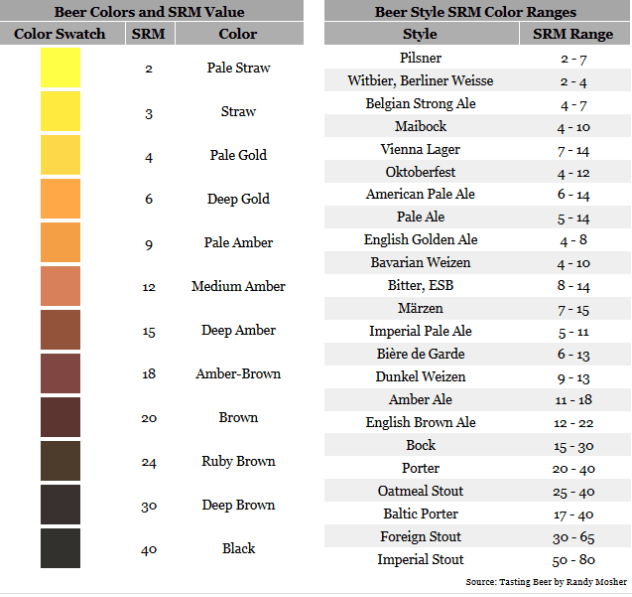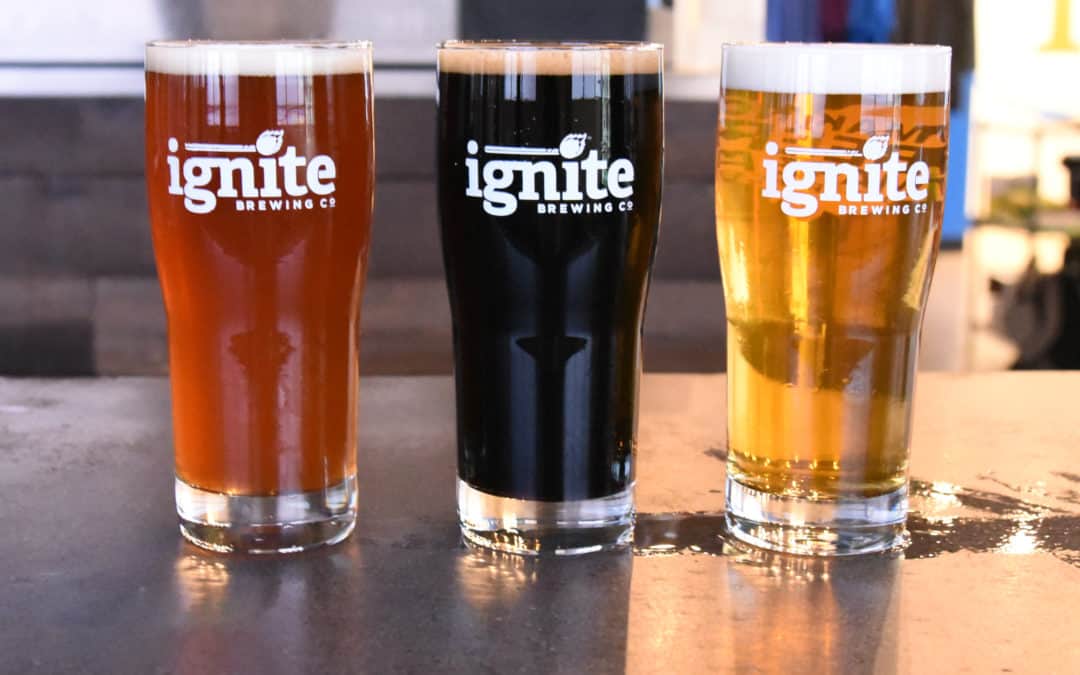Curious about what influences beer color during the brewing process? Read on to learn more from our head brewer Jason Porter!
Beer Color is measured on a scale called the Standard Reference Method or degrees SRM, as referenced below:

So, what influences the color of your beer? There are two things to consider: the actual color of the ingredients and the clarity or haziness. There are many factors that influence both factors.
Malts: Malts are the number one factor in influencing beer color. Simply put, the more the malts are roasted, the darker the wort will be. Wort is the sugar solution that is produced from the malt. Malts develop color during roasting just like other foods. Apples, steaks, carrots, etc. all brown through the same processes called the Maillard Reactions. Simply, it is what happens when a sugar and a protein react with heat. Along with the darker color, from caramelization, endless quantities of flavor compounds are created.
Mashing: Mashing is a technique that is performed by bringing the temperature up to a certain level and letting it sit, or by fluctuating the temperature throughout the steeping process. The water’s pH levels come into play during this process; the higher the water’s pH, the darker the color.
Boiling: Boiling is the second most important factor influencing the beers color. The hot break at the beginning is when a portion of the proteins break apart and come out of the wort. If the protein did not settle to the bottom of the kettle, it would stay in the beer providing haze. Also, during the boil, the sugars will caramelize. The longer the boil, the more color picked up. This is the last chance a brewer has to change the color. From this point forward, it is all about the clarity of the beer.
Cold Break: After the boil, the wort is rapidly cooled. The cold break is when another portion of proteins comes out of solution. They will fall to the bottom of the fermentation tank once it settles.
Fermentation: During fermentation, protein and hop particles will settle to the bottom. When fermentation is complete, the yeast flocculate, or buddy up in clumps big enough to settle to the bottom. Certain strains and conditions lead to better flocculation. If they do not flocculate well, they will stay in the beer providing haze.
Filtering: After fermenting, filtration removes hazy particles which will result in a clearer beer. An unfiltered beer will result in a hazy and opaque appearance.
All these together allow the brewer to create a wide visual variety that separates beers not just by their flavors. Of course, additional ingredients can be used to influence the final product. Fruits, teas, coffees, and more are used to not only provide their flavor, but leave a picture worthy pint.
Cheers,
Jason Porter

